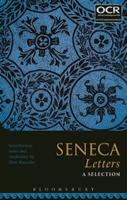
Bloomsbury (2016) p/b 120pp £12.99 (ISBN 9781474266062)
This is a textbook written to support candidates sitting OCR Latin A level in 2018 and 2019 who will be studying Seneca Epistles 51, 53 and 57 in Latin, and Epistles 21 and 54 and Tacitus Annals 15.60-64 in English.
A distinguished educator once wrote to the effect that a Latin teacher had finally succeeded only when his pupils on seeing the word navis did not immediately think ‘that means a ship’ but rather saw in their mind’s eye a noble vessel ploughing the waves. In other words, mastering a foreign language is not just an end in itself but a gateway to entering into and engaging with the thought patterns, the ideas, the emotions, the hopes and fears, the moral dilemmas etc. of the writers in that language.
But the stages on the road to fulfilling this ideal require close study of the language, and for this examinations may be seen as a necessary evil. So the ideal text book in this context should not only help the students to develop their understanding of the language (and, one hopes, to satisfy the examiners) but also seek to keep alive the longer term aim of seeing the author as a real person to be studied not only for his stylistic technique but for his thoughts and feelings.
So how does Eliot Maunder, who teaches classics at North London Collegiate School, meet this double challenge? For this reviewer he succeeds admirably. His thirty page introduction includes a masterly summary of Seneca’s life and the challenges of negotiating the unpredictabilities of public life in the early Empire while seeking to maintain some sort of personal integrity. He comments on Seneca’s varied literary output, his philosophical interests in pursuit of the good life as understood by the Stoics, and the nature of the Epistles and their stylistic features (especially the pithy telling phrase); and he offers brief notes on significant personalities in Seneca’s life, a short glossary and a list for further reading. In the course of this introduction he skilfully weaves in observations relevant to the texts to be read in English. The relevant Latin texts are followed by thirty five pages of notes explaining grammatical and other usages which might puzzle the student. The book ends with a vocabulary containing every word used in the Latin texts.
This is, of course, only an introduction to a complex personality and an equally complex set of ideas, but it encourages the student to engage not only with the texts but with the human being behind them. As one who at A level over fifty years ago was ‘taught to the exam’, I wish that such a mind-opening and encouraging book as this had been available then.
Ray Morris
